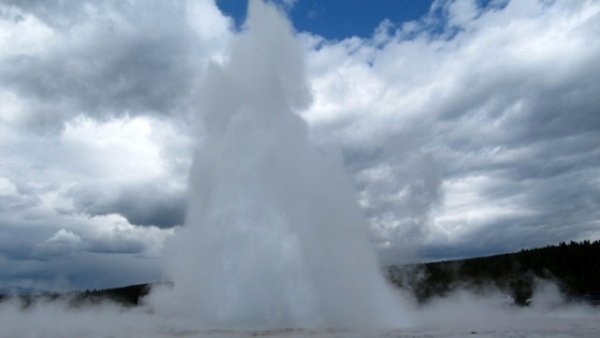Water Plumes Provide an Opportunity to Test Models
Earlier this week, news of water plumes on Jupiter’s moon Europa splashed across news headlines. The excitement about the discovery was not the existence of water, but the likely source of the water.
What They Discovered
Using the Hubble Space Telescope (HST), astronomers observed Europa as it passed in front of Jupiter. As the moon begins to transit, any atmosphere it has will block some of the light coming from Jupiter. (Scientists also use this technique to look for atmospheres on exoplanets.) Over the past 15 months, the research team observed 10 transits of Jupiter by Europa. During three of these transits, the data indicated the presence of finger-like projections extending from the surface of Europa, consistent with plumes of water erupting from the surface of the moon.

Image: Photo Composite of Suspected Water Plumes on Europa
Credit: NASA/HubbleSite
The plumes shoot more than 100 miles toward space before falling back onto the moon’s surface. Although more data is required to confirm the presence of the plumes, similar results were published in 2014 from a different group using a different technique. The amount of material in the current plumes is consistent with previous findings.
The Significance of the Discovery
Water vapor plumes are not a new thing. Observations of Saturn’s moon Enceladus almost a decade ago found such plumes. Studies of the mechanism for producing the plumes on Enceladus point to a source of gas rather than liquid water. According to scientific consensus, Europa hosts a liquid water ocean roughly 60 miles deep—although it sits under 10–20 miles of solid ice. If the plumes contain water from the subsurface ocean, they provide a great opportunity to test the popular idea that life forms where a minimal set of conditions is met.
The variability of the plumes makes it difficult to predict their presence. However, NASA currently has a mission scheduled for launch in 2022 that will make multiple flybys of Europa. If the plumes occur during one of the flybys, the mission could sample the material and look for evidence of life’s building blocks (organic molecules) or possibly life itself. Even without sampling the plumes, instruments could analyze the surface where the water from the plumes eventually settle. In the absence of these plumes, the only alternative to investigating the subsurface ocean is an expensive mission capable of drilling through miles of solid ice!
The Bigger Picture
The last couple of decades brought substantial evidence that liquid water exists (or has in the past) on many solar system bodies such as Venus, Enceladus, Europa, and the asteroid Vesta. (Mars even experienced tsunamis.) In one sense, such finds are not surprising since water is the third most abundant molecule in the universe (behind two forms of molecular hydrogen). The real question centers on whether bodies of liquid water provide everything life requires to start and survive. Reasons to Believe contends that life requires far more than liquid water (and a few other minimal conditions). The solar system contains other environments with liquid water that we can access with relative ease (in comparison to planets orbiting distant stars). This access provides the opportunity to test if life forms easily or if the presence of life on Earth points to the work of a Creator.
Subjects: Requirements for Life, Water
Check o ut more from Reasons to Believe @Reasons.org





